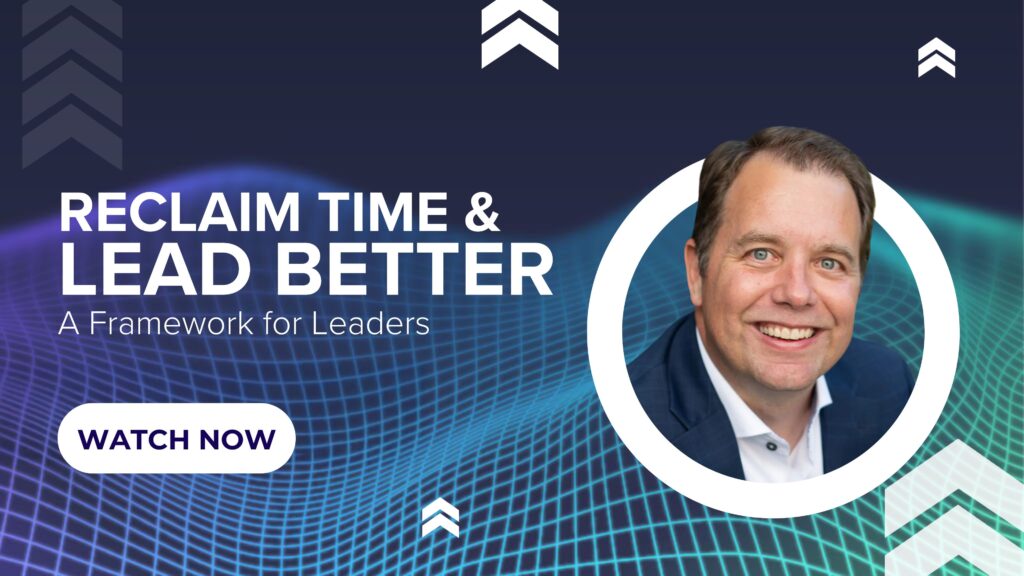In today’s high-growth companies, leadership development isn’t a luxury.
It’s a survival strategy.
But too often, organizations pour money into conferences, trainings, and off-sites, only to see minimal change back at work. Culture stalls. Leadership benches thin. Burnout spreads. Why?
Because training alone doesn’t build leaders. Systems do.
That’s the heartbeat of The Leadership Manifesto, a new framework born from our work with fast-scaling companies who want more than quick wins. They want sustainable culture, growing people, and a business that doesn’t break when it grows.
Let’s walk through the six truths of the manifesto and how they might reshape how you lead.
1. Training Doesn’t Build Leaders. Systems Do.
It’s tempting to believe that leadership happens in the conference room — a dynamic speaker, a notebook full of ideas, and a dose of inspiration. But what happens next week?
Here’s what we’ve learned: training is just a spark. Without a system to follow it up — with reflection, feedback, and real application — the spark fades. That’s why leadership development has to be integrated into your actual workflow.
Start with this:
- Use micro-learning during team huddles
- Schedule coaching rhythms monthly
- Pair high-potential leaders with mentors through apprenticeships
The system matters more than the session.
2. Hope Isn’t a Pipeline. Strategy Is.
We all know the feeling — a great team member shows promise, and you think, “Maybe they’ll grow into the role.” But without clarity, that growth stalls.
One of our clients once said, “We’re not bad at hiring. We’re just bad at multiplying.”
Building a leadership pipeline means asking strategic questions:
- Who are we developing?
- What are we preparing them for?
- How do we measure growth?
Our Intentional Multiplication Tool offers a framework for this, combining four steps: Informing, Training, Coaching, and Apprenticing. Hope isn’t enough. Clarity is a better strategy.
3. You Don’t Hire Culture. You Build It (Every Day).
Culture isn’t a vibe. It’s not a foosball table or a Slack emoji set. It’s how decisions get made when no one is looking.
It’s easy to say “We hire for culture,” but unless you’ve defined and operationalized that culture, you’re just hoping for alignment.
We worked with a financial services company that kept losing talented hires because they hadn’t translated their values into behaviors. Once we helped them define their ORG ID — Vision, Values, Strategy, and Voice — everything shifted. They created meeting rhythms around those values. They celebrated behaviors that aligned. Their culture got sticky.
Ask yourself:
- What’s getting repeated?
- What’s being rewarded?
- What happens when things go wrong?
That’s your culture.
4. Heroic Effort Is Not a Growth Plan.
We love hustle. But hustle has a shelf life.
In one of our most memorable client stories, a high-growth engineering firm was riding the momentum of multiple acquisitions. But everything still depended on the CEO. Every decision. Every meeting. Every late-night email.
He was burning out. The culture was fraying.
Together, we built a system that redistributed leadership: monthly coaching circles, a defined set of tools, and leadership rhythms that multiplied influence.
And what happened next?
He took weekends off. He taught his son to kayak — for the first time in years.
You can grow through grit. Or you can grow through systems. One is temporary. The other is sustainable.
5. Your Business Won’t Grow Faster Than Your People.
Every business leader wants scale. But most forget that scale requires capacity.
And people are your capacity.
We use a tool called the Maximizing Team Performance Flywheel. It shows how organizational growth is powered by relational strength — trust, clarity, communication, alignment. But here’s the catch: you can’t scale a company if you don’t scale your people.
It’s not just about hiring more. It’s about helping people lead more.
Ask:
- What can only I do?
- What am I holding onto that I should hand off?
- Who do I need to develop in order to grow?
Growth is limited by leadership. Always.
6. Information Doesn’t Create Transformation. Execution Does.
This one might hit home: you’ve read all the books. You’ve taken notes at every retreat. You’ve even built a Google Drive full of PDFs.
But leadership doesn’t live in the notes. It lives in behavior.
Transformation is what happens when ideas become habits. When tools become team language. When conversations start to change.
We once worked with a healthcare leader who consumed leadership books weekly. But the culture was stuck. Once he started embedding one tool — the 5 Voices — into team meetings, things changed. People began speaking up. Feedback got normalized. Trust grew.
What’s one insight you’ve consumed but haven’t yet executed? Start there.
From Accidental to Intentional
Every one of these truths points to the same deeper shift: moving from accidental to intentional. It’s the difference between reacting and designing. Between scaling chaotically and growing on purpose.
The Leadership Manifesto isn’t just a framework — it’s a challenge. A challenge to lead with systems. To care for people. To align your business with the future you actually want to build.
One Bold Step
Jeff Lovell said it best in the episode: “Build one system.” Not five. Not a whole overhaul. Just one.
- Choose one meeting to elevate
- Choose one person to multiply
- Choose one rhythm to start
Because once you build one system, the next one gets easier.



